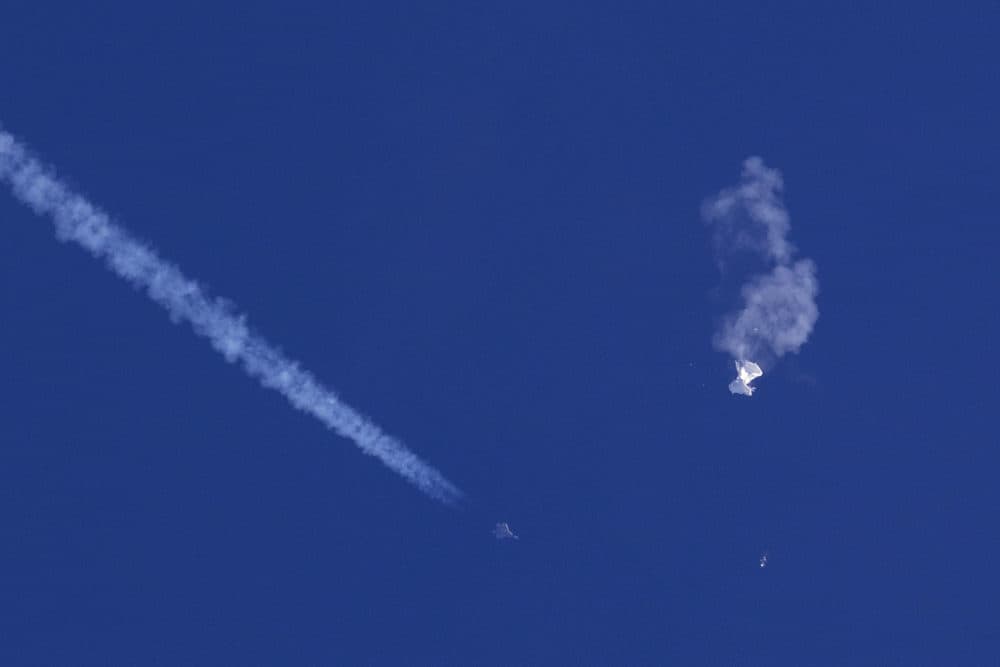Advertisement
Despite new attention, balloons and other flying objects have been filling U.S. skies for decades
Resume
The Chinese balloon that floated across the country in early February caused the cancellation of Secretary of State Antony Blinken's trip to China and damaged an already tense relationship between the U.S. and China.
But it also ignited a new focus on other flying objects — over the course of a few days one was shot down over Canada's Yukon, another over Alaska and a third over Lake Huron.
Defense Department officials have since said the last three were almost certainly not spying on the country — one is thought to have been a $13 balloon belonging to the amateur North Illinois Bottle Cap Balloon Club.
Host Robin Young talks to Paul Fetkowitz, president of Kaymont Consolidated, one of the country's largest manufacturers of balloons, who says the number and scope of balloons and other objects should not have come as a surprise to officials. He outlines what they are.
This segment aired on February 21, 2023.